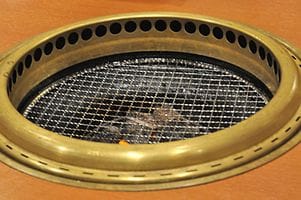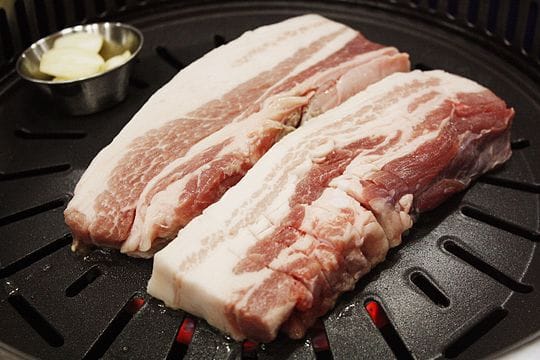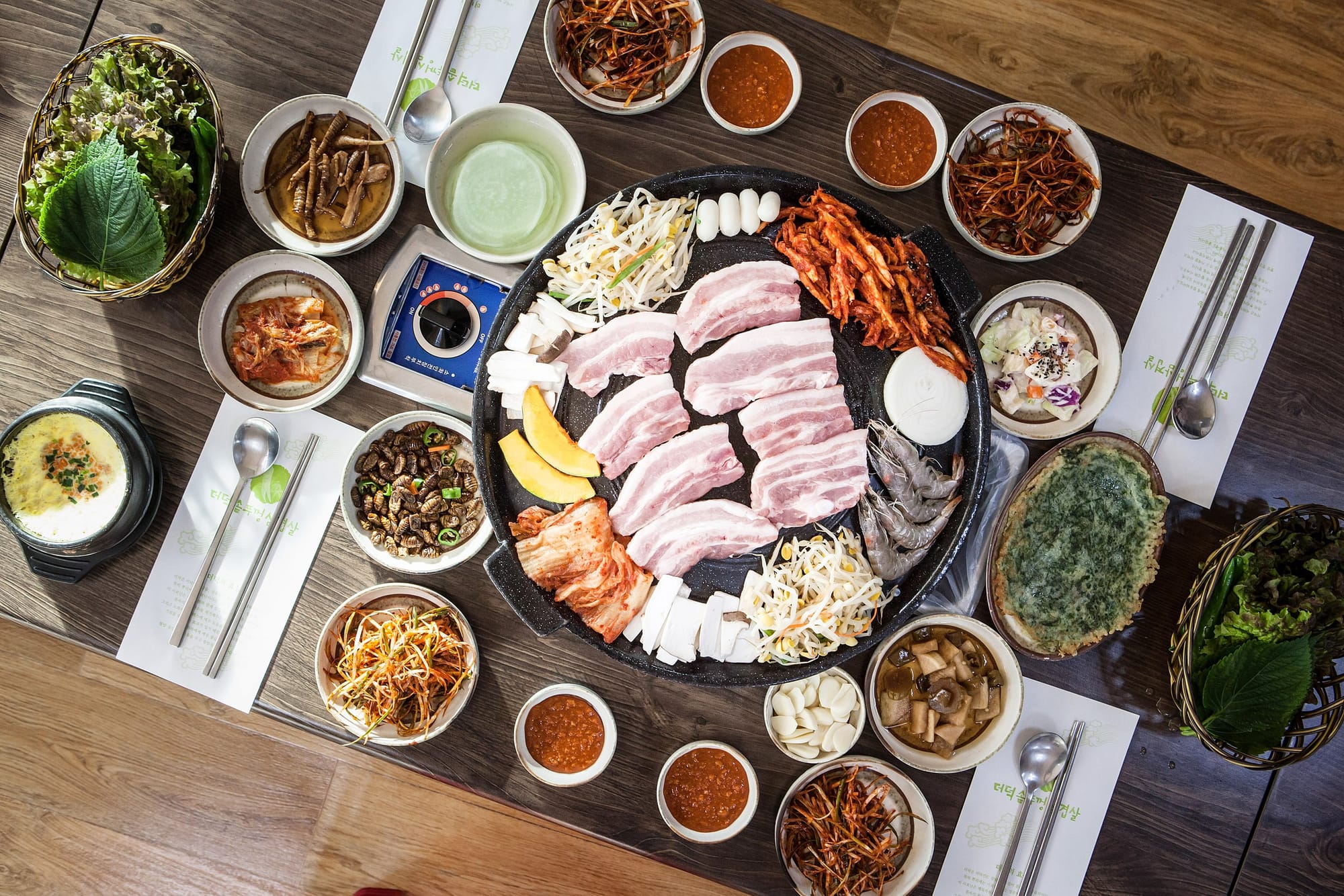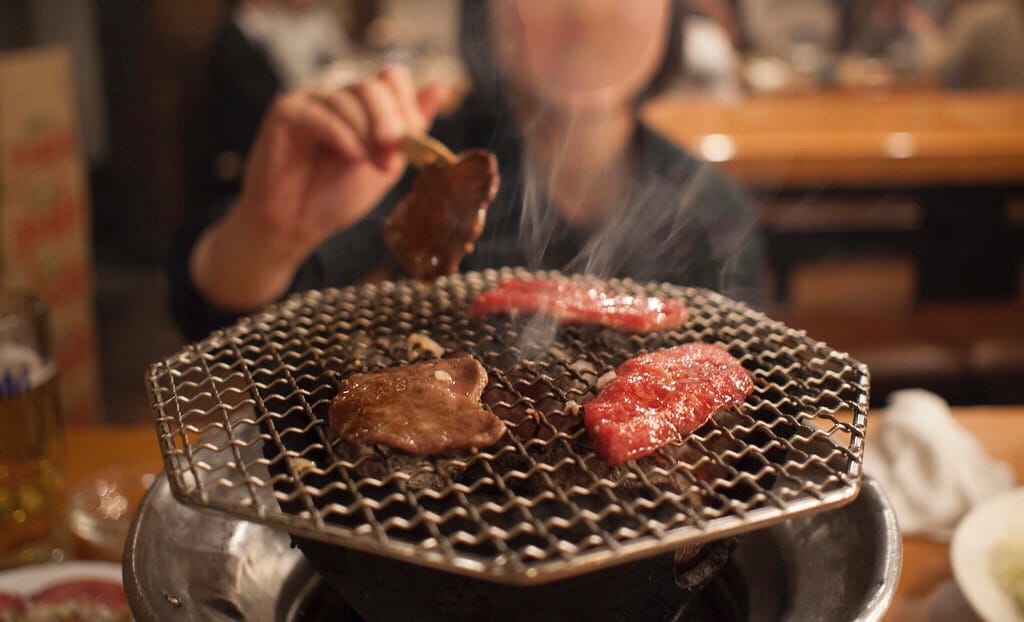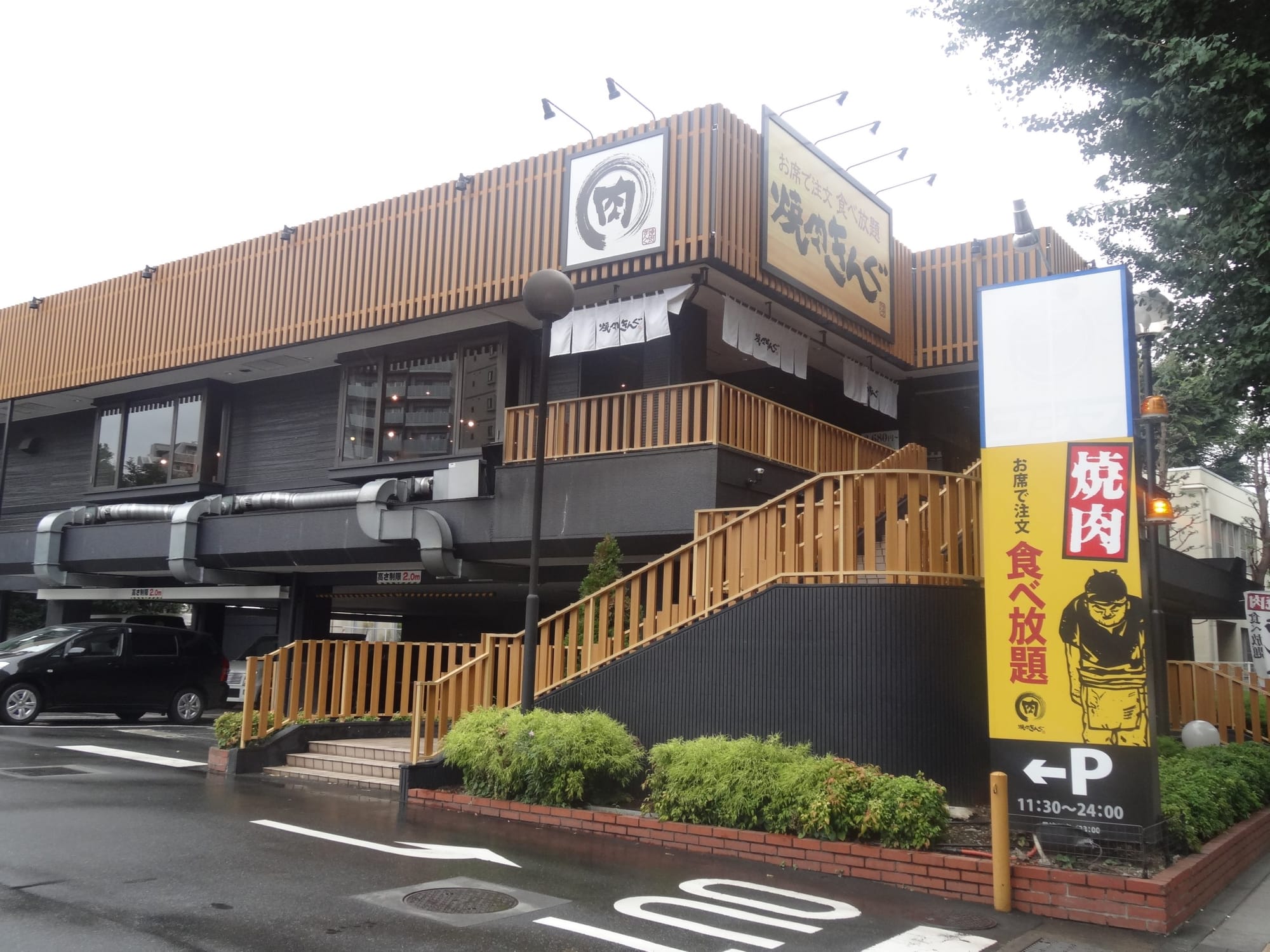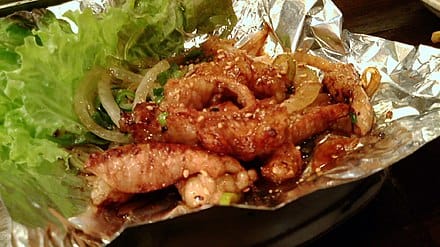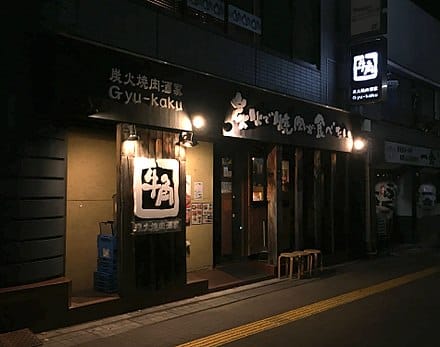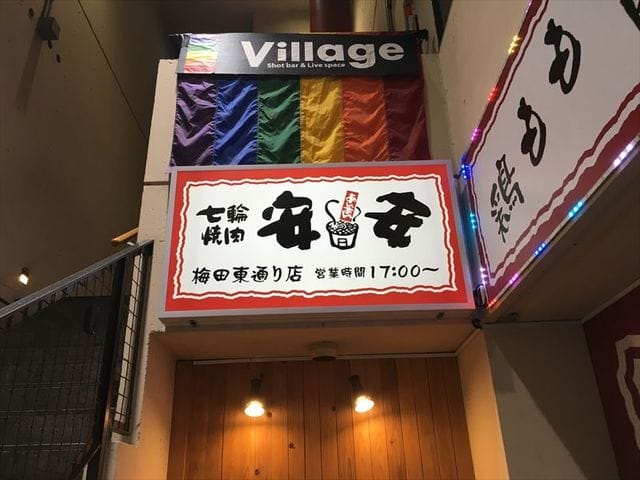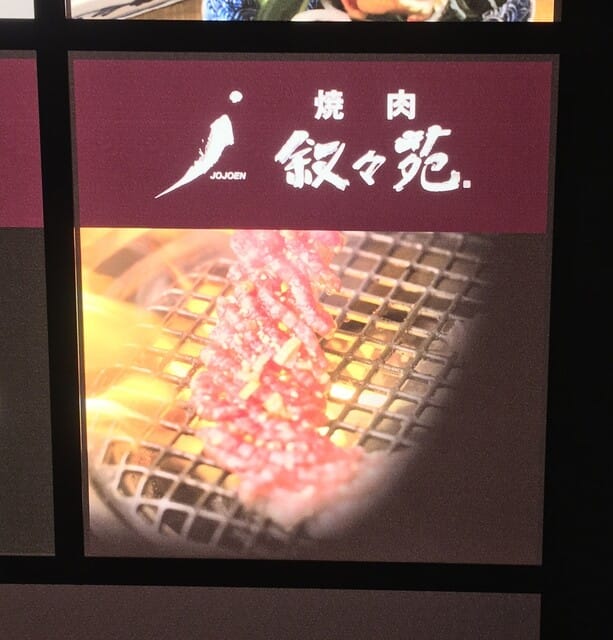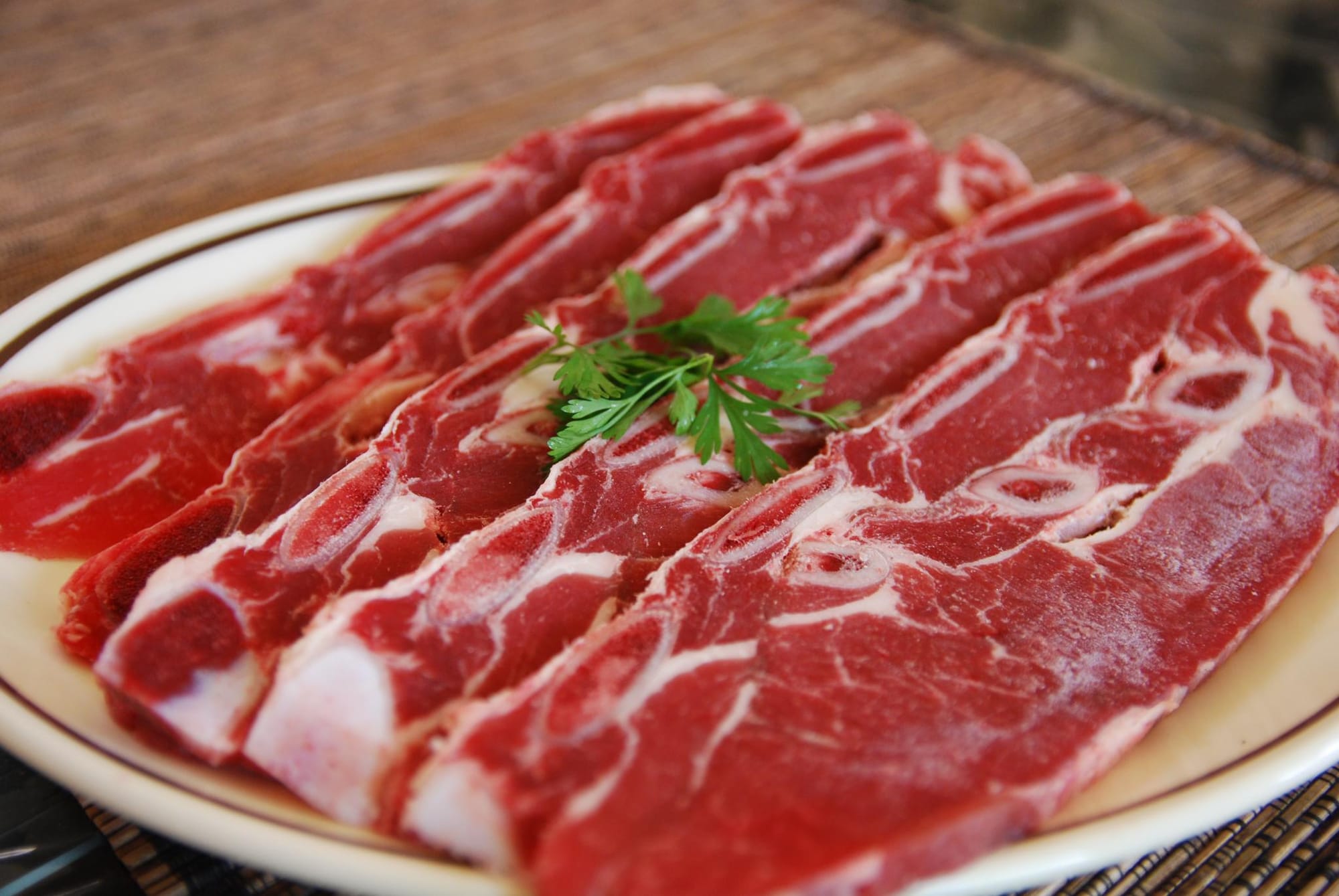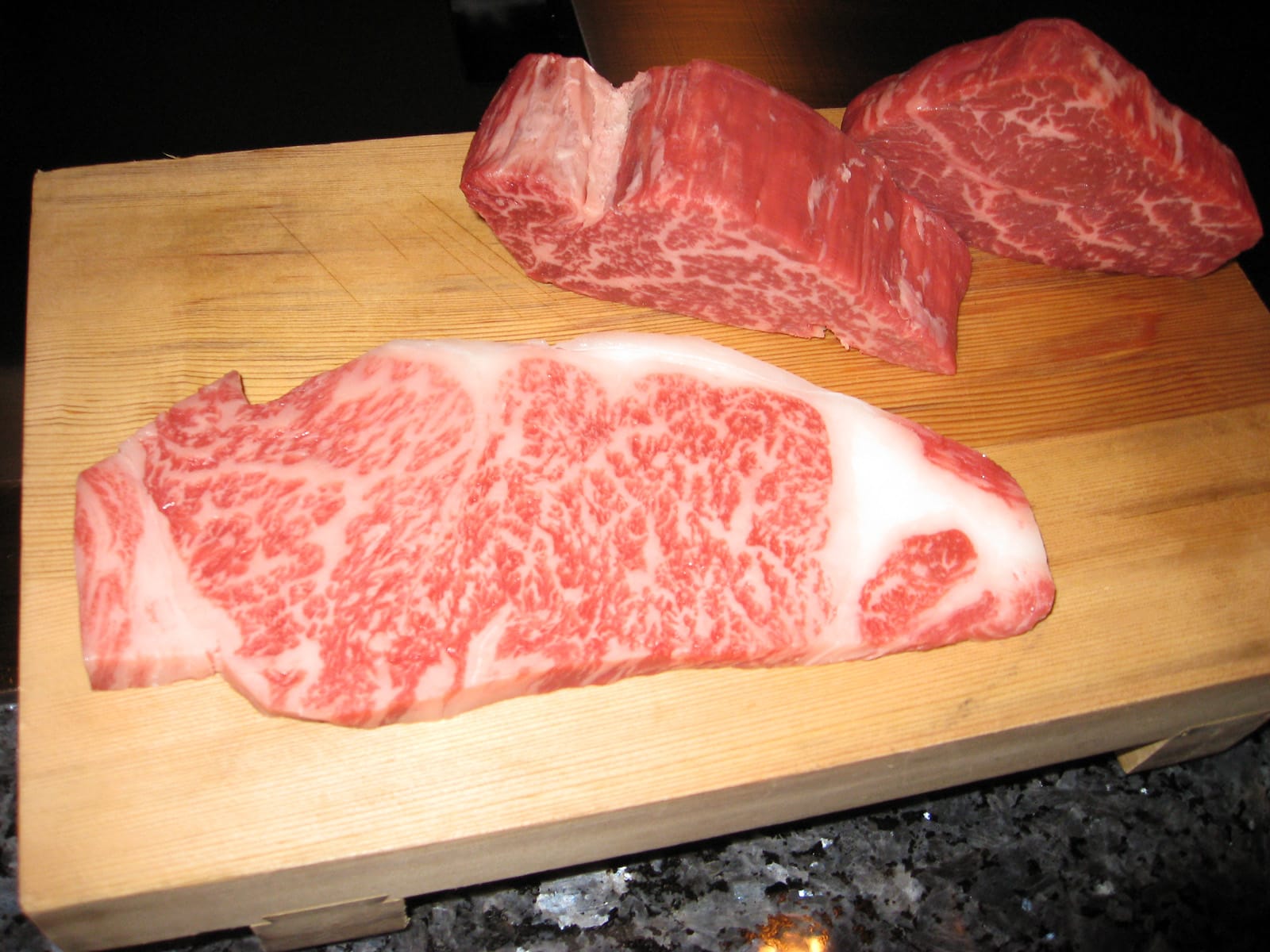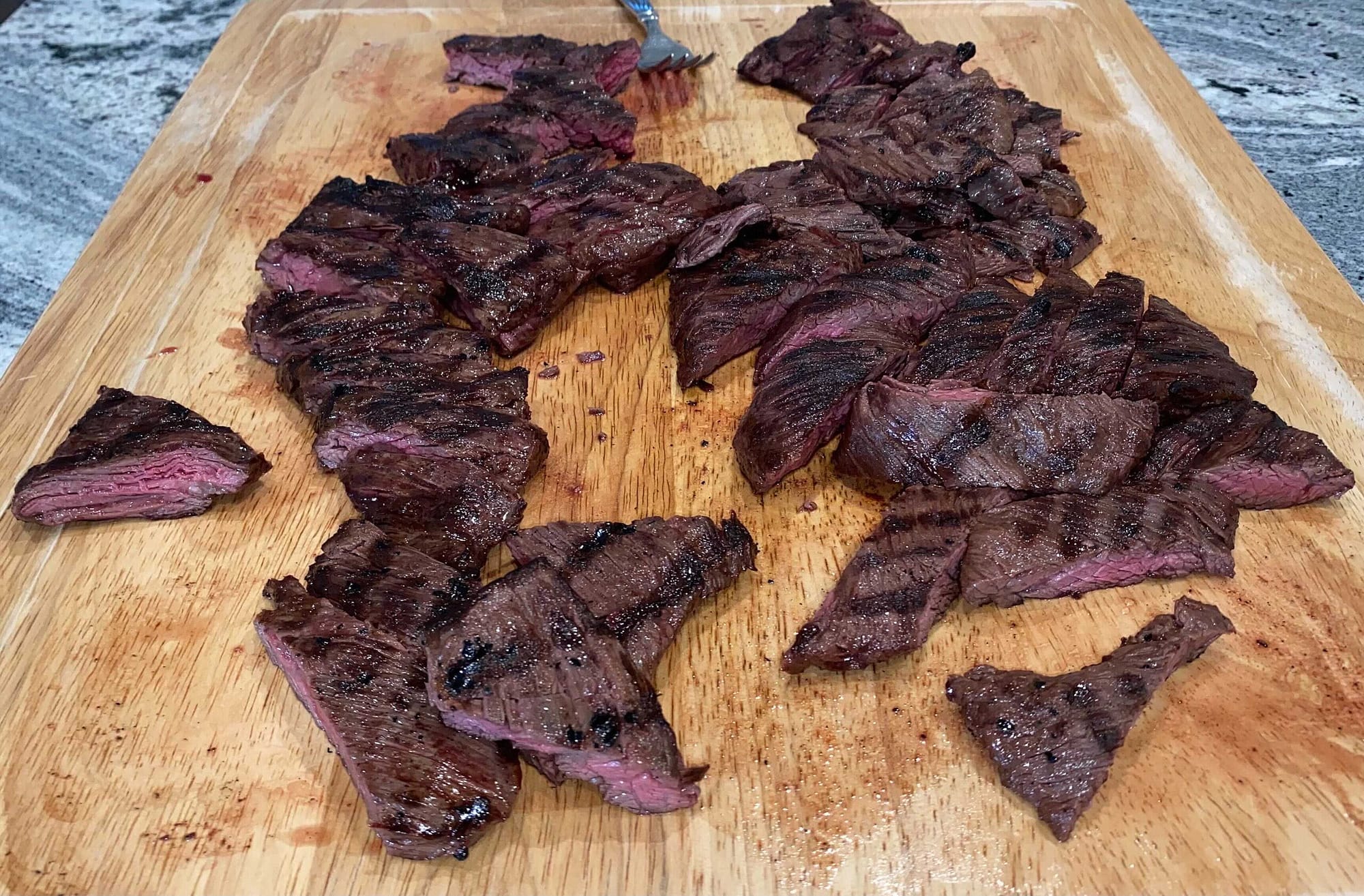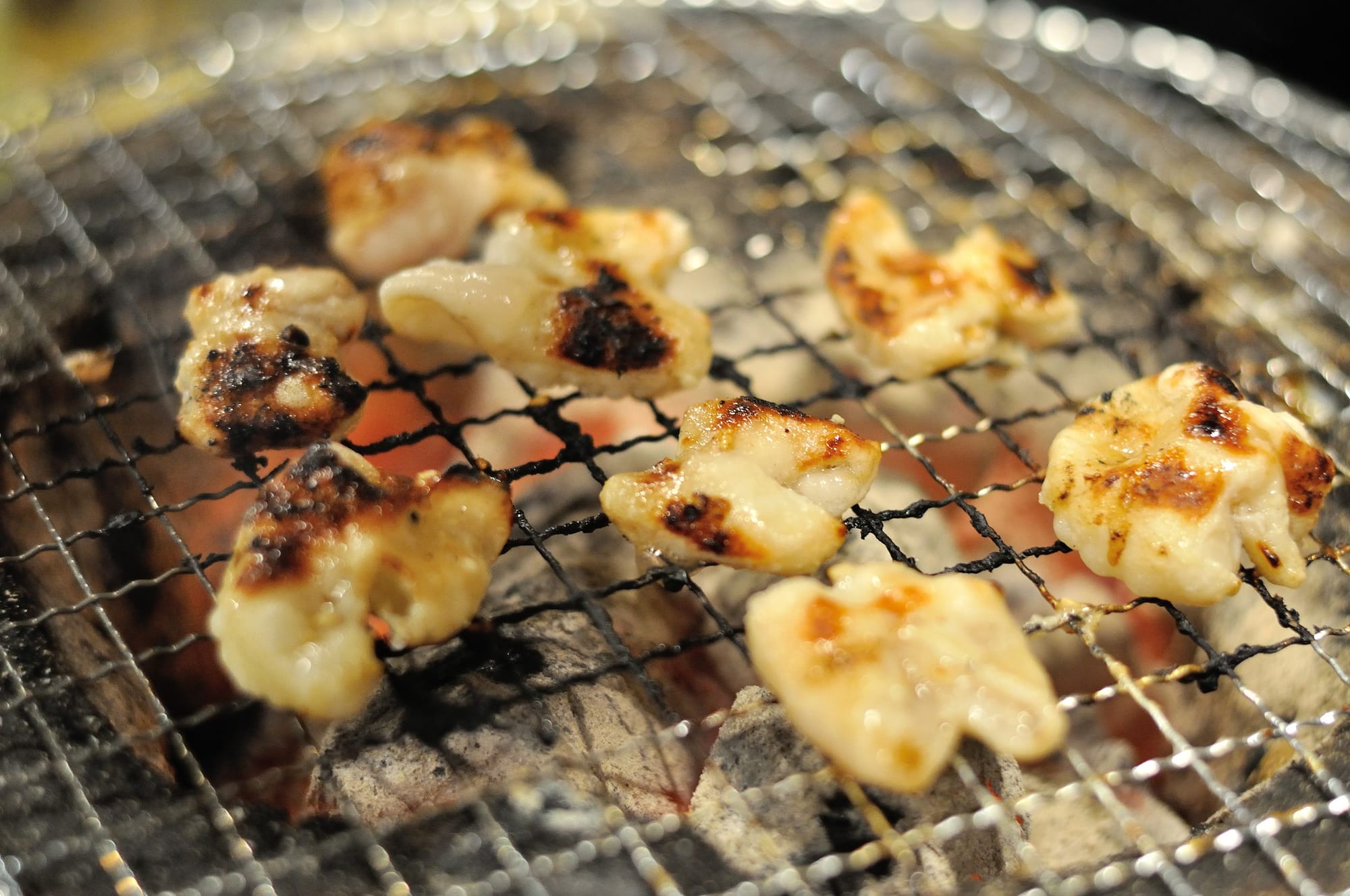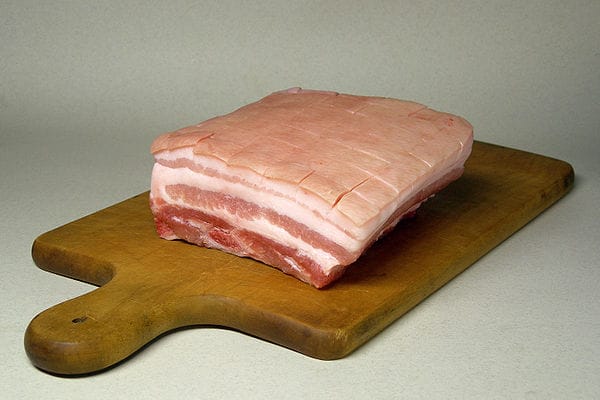"Yakiniku" refers to Japanese-style BBQ food.
Yakiniku is also a soul food representing Japanese food culture. But it's actually a bit different from Korean barbecue. For example, Japanese yakiniku often uses thinly sliced meat, while thick cuts are more common in Korea. There are also differences in sauce flavors, and it's interesting to learn about these differences even though they're both called yakiniku.
I think the charm of yakiniku lies in the experience of grilling it yourself. Watching the meat cook on the grill is sure to stimulate your appetite. It's fun to adjust the cooking time and add sauce to create your own perfect dish. The moment of gathering around delicious meat with everyone is truly blissful.
In this article, I want to share the appeal of yakiniku, from basic knowledge for fully enjoying yakiniku to the characteristics of different cuts and types of restaurants where you can eat yakiniku.
I hope that by including my own experiences, this will inspire readers considering a trip to Japan to become interested in yakiniku!
What is Yakiniku?
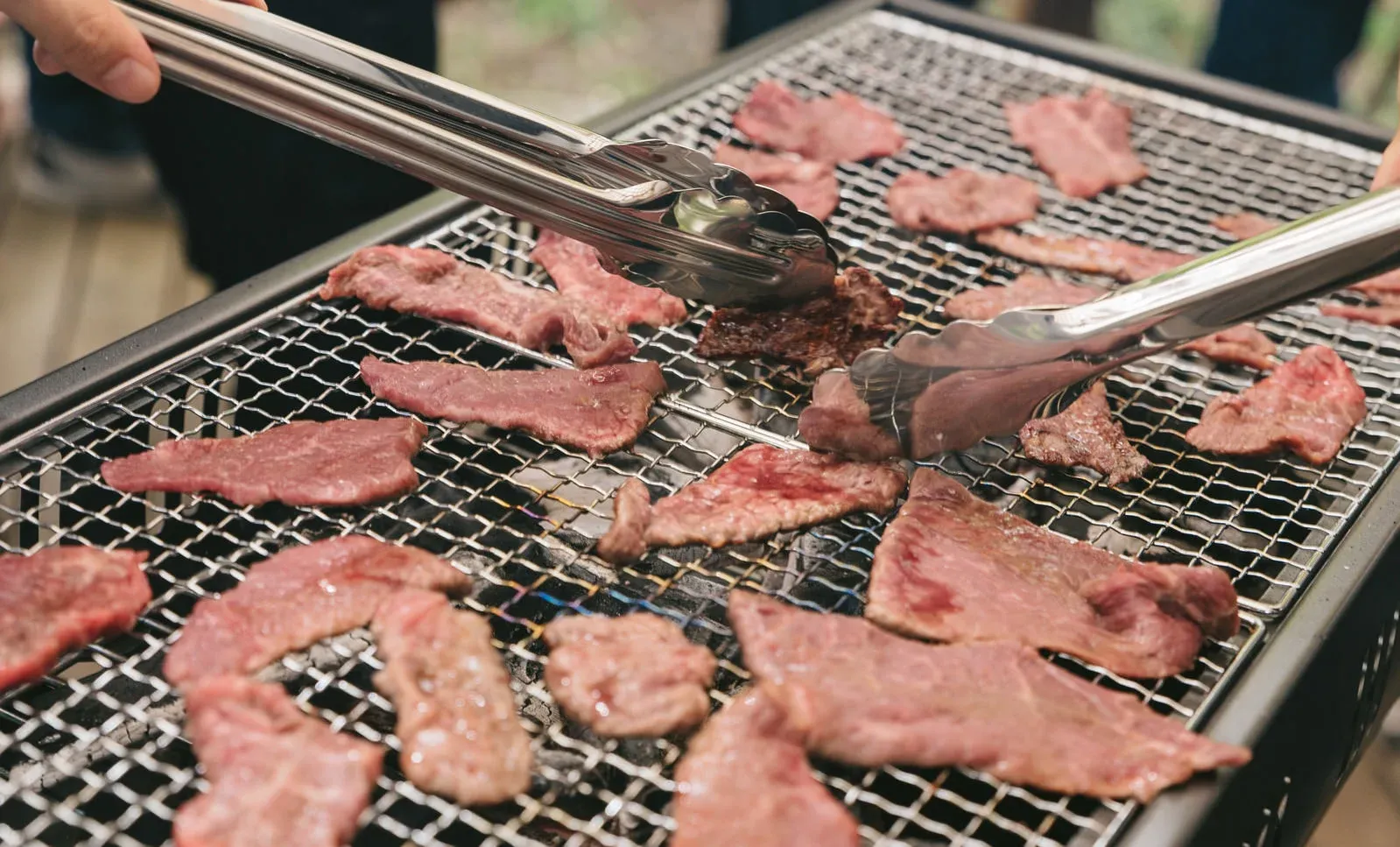
Yakiniku is one of the most popular dishes in Japan. The basic style of yakiniku is to thinly slice various meats such as beef, pork, and chicken, and grill them on a grill or iron plate. In addition to grilled meat, it's common to grill vegetables and mushrooms together.
One characteristic of yakiniku is that it's often enjoyed with family and friends. Gathering around delicious meat, enjoying conversation while eating - yakiniku is perfect for such enjoyable times.
I also love going to eat yakiniku with friends and family. While grilling meat together, we share recent news and joke around. Conversation naturally flows. I hope foreign visitors can also experience this.
Characteristics of Unique Japanese Yakiniku BBQ
Source: Wikipedia
You might have thought, "Isn't this just like BBQ?" from the explanation so far. So, what are the unique characteristics of Japanese yakiniku?
First, it often uses thinly sliced meat. This is a technique to bring out the umami of the meat and make it easier to eat. The thinness allows you to bite through the meat fibers easily in one bite.
Also, Japanese yakiniku tends to emphasize the quality and freshness of the meat. There are many shops that offer high-grade meat like A5 rank Wagyu beef. Being able to taste carefully selected meat is a unique charm of Japanese yakiniku.
The sauce is also one of the characteristics of Japanese yakiniku. It's characterized by a rich variety of flavors, from sweet to spicy. My favorite is a sweet and savory sauce with a sesame flavor. It enhances the umami of the meat.
The vegetable and mushroom sides are also not to be missed. It's nice to be able to eat vegetables in balance with the meat. I love grilling fresh, crispy vegetables together with the meat.
Another characteristic of Japanese yakiniku is the popularity of all-you-can-eat restaurants. It's attractive that you can eat as much meat as you want for a fixed price. I recommend going with a large group and comparing different cuts.
Why Do Japanese People Love Yakiniku?
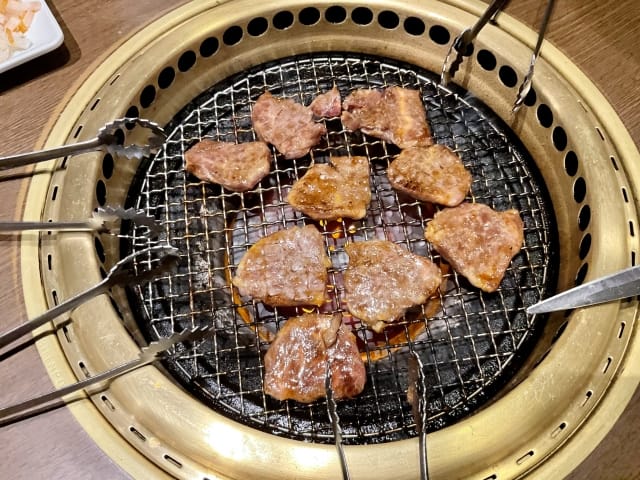
I'll introduce the reasons why yakiniku is loved by Japanese people. First, Japanese people tend to prefer fresh, high-quality meat. At yakiniku restaurants, you can grill and taste such fresh meat yourself.
Also, as I mentioned earlier, yakiniku is popular as a place for communication with family and friends. Gathering around the table and eating the same dish - this is one of the values that Japanese people cherish.
Another attraction is that you can enjoy a variety of cuts in small portions. The taste and texture differ depending on the cut, so comparing different cuts is part of the enjoyment. This might be a way of enjoying food that tickles Japanese people's curiosity about food.
Moreover, it's nice that you can choose yakiniku restaurants to suit various budgets and preferences. There's a wide range from high-end restaurants to casual ones, so you can enjoy yakiniku in your own style.
I often go to reasonably priced all-you-can-eat yakiniku restaurants. They're a grateful existence since my student days because you can eat your fill cheaply.
Even now, we sometimes gather and eat yakiniku, reminiscing about those days. I feel that the good thing about yakiniku is that everyone can eat delicious food together even with limited budget and time.
How Do You Eat Yakiniku?
Source: Wikipedia
Next, I'll introduce how to eat yakiniku. Basically, it's common to grill and eat the meat yourself. First, preheat the grill or iron plate sufficiently. This is the key to grilling deliciously.
When grilling meat, be careful not to burn it. It's important to judge the right degree of doneness because overcooking will make the meat tough. I prefer it when it's just slightly browned.
You eat the grilled meat with sauce according to your preference. I recommend first tasting the meat without anything to enjoy its flavor. Then, it's good to enjoy the change in taste by adding sauce.
It's delicious to eat rice with the meat, but I like rice the best. I think the true pleasure of yakiniku is to savor rice soaked with the umami of the meat.
Also, I recommend eating it with fermented foods like namul or kimchi. The balance between the umami of the meat and the acidity of fermented foods is exquisite.
I think everyone has their own way of enjoying yakiniku, but finding your own delicious way to eat is part of the fun. Please try various ways.
Differences from Korean Barbecue
Korea has a similar barbecue culture to Japan, so the differences might not be apparent at first glance.
In this section, I'll introduce the differences between Japanese and Korean barbecue.
How the Meat is Cut
Source: Wikipedia
The biggest difference between Japanese yakiniku and Korean barbecue might be how the meat is cut. In Korea, thick-cut meat is often used. Samgyeopsal is a representative example. The charm is that you can fully enjoy thick slices of pork belly.
On the other hand, thin-sliced meat is mainstream in Japanese yakiniku. As I mentioned earlier, thin-sliced meat is easy to eat and brings out the umami of the meat.
Sauce Flavoring
Source: Wikipedia
There are also differences in sauce flavoring. Korean barbecue is characterized by spicy sauce based on gochujang. It's spicy and addictively delicious.
In contrast, Japanese yakiniku sauce comes in many varieties, from sweet to spicy. Many are soy sauce-based, but there are also miso-based sauces. I recommend changing the sauce depending on the cut of meat. I think sweet sauce goes well with fatty cuts, while spicy sauce suits lean meat.
Eating Style
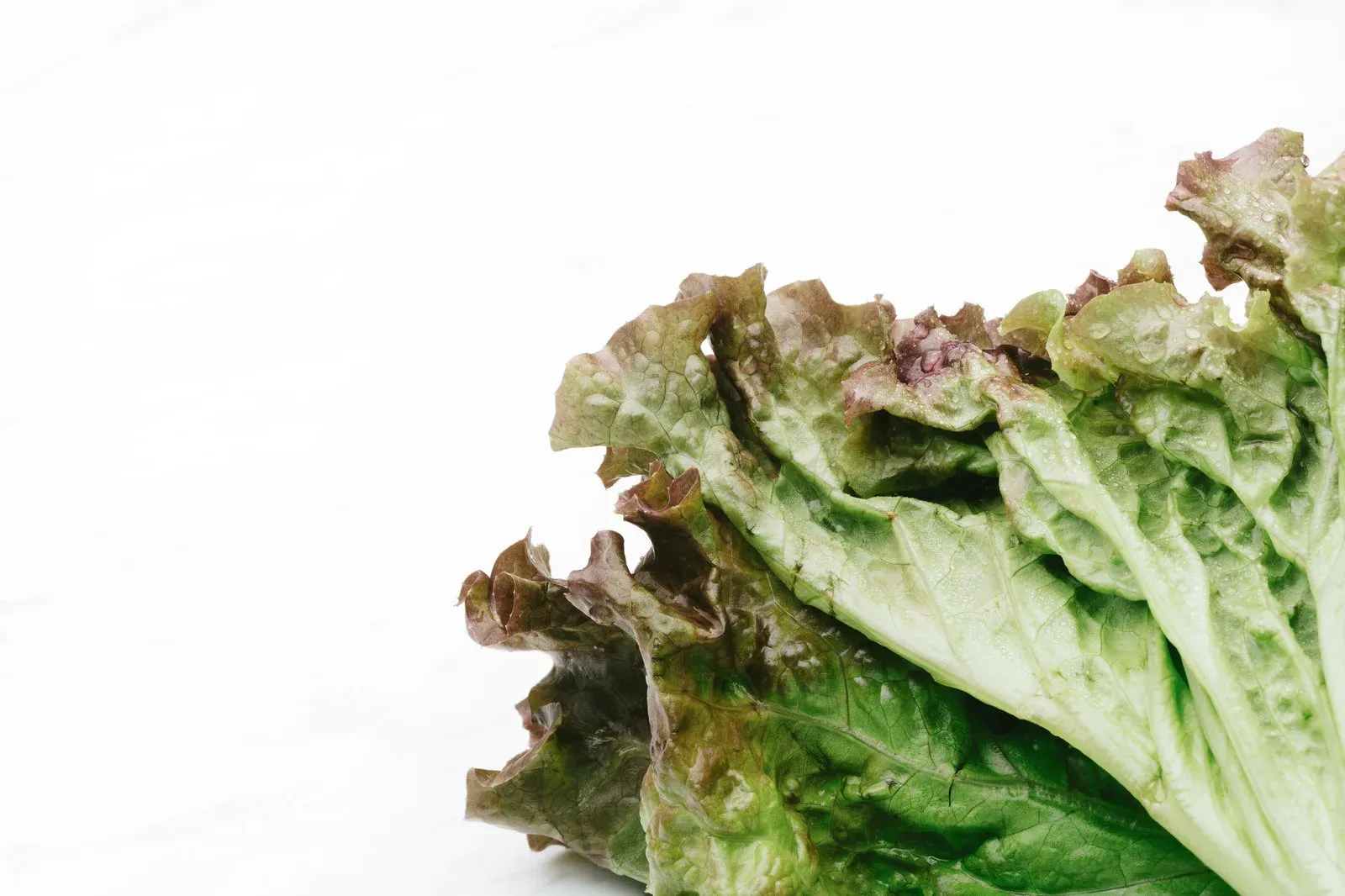
There are also differences in eating style. In Korea, it's common to wrap the meat in leafy vegetables called ssam. It's delicious to wrap it together with garlic and kimchi.
On the other hand, Japanese yakiniku is often eaten with rice. I'm also a rice faction. It's especially delicious when the sauce mixes with the rice.
Side Dishes
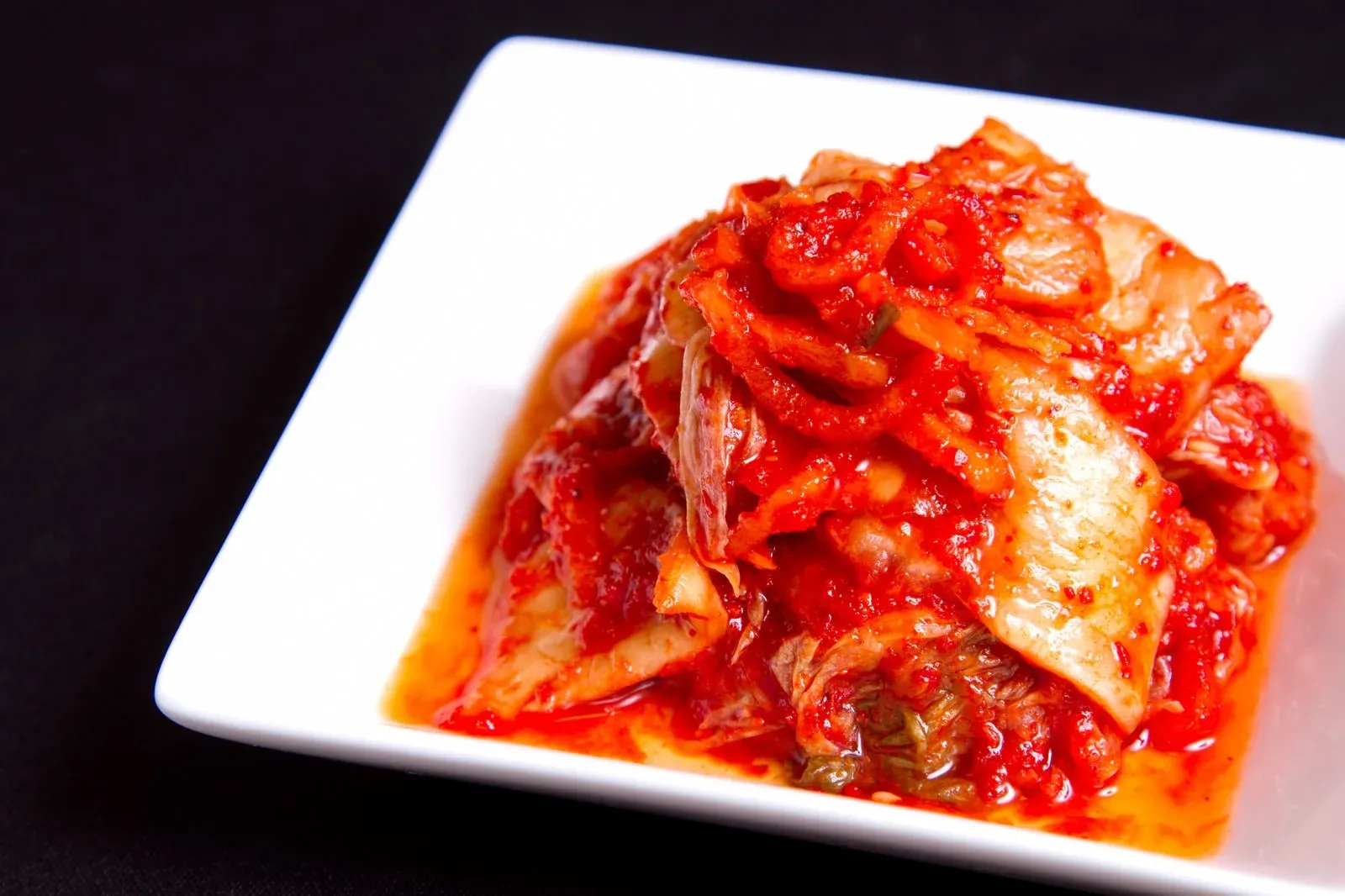
There are also differences in side dishes. In Korea, fermented foods like kimchi are essential. However, kimchi is also a popular side dish in Japan.
In Japanese yakiniku, besides fermented foods, there's a rich variety of vegetables. Various vegetables like pumpkin, bell peppers, and king oyster mushrooms are prepared. One of my favorite ways to eat is grilling vegetables together with meat.
As you can see, there are many differences between Japanese and Korean barbecue. But both are undoubtedly delicious. If you have the chance, it might be interesting to compare both types of barbecue.
Types of Yakiniku Restaurants in Japan
When you come to Japan to eat yakiniku, knowing a few types of restaurants will make it easier to choose where to eat. Here, I'll introduce four representative types.
Yakiniku Specialty Restaurants
Source: Wikipedia
In Japan, there are many restaurants specializing in yakiniku. There are various types of yakiniku specialty restaurants, from high-end to casual.
High-end yakiniku restaurants are characterized by their commitment to high-quality meat. You can taste the highest grade meat like A5 rank Wagyu beef. The atmosphere is also calm, perfect for special occasion dinners.
Of course, I also recommend casual yakiniku specialty restaurants. The charm is that you can eat delicious yakiniku at reasonable prices. The shop I often went to during my student days was cheap and delicious, and I still go there occasionally.
Yakiniku specialty restaurants have various types of seating, from private rooms to table seats. I recommend private rooms when going with a large group. You can enjoy yakiniku leisurely in a private space.
Some shops have course menus. These are recommended even for yakiniku beginners because you can taste various cuts in small portions.
All-You-Can-Eat Restaurants
Source: Wikipedia
Next, I'll introduce all-you-can-eat restaurants. The biggest attraction of all-you-can-eat is that you can eat as much yakiniku as you like within a certain time limit. You can fully enjoy meat to your heart's content.
A nice point about all-you-can-eat restaurants is their reasonable pricing. During my student days, I often went to all-you-can-eat restaurants with friends. I have fond memories of enjoying eating our fill while chatting noisily with everyone.
The types and quality of meat vary depending on the restaurant in all-you-can-eat places. Some restaurants offer high-quality meat, while others offer more common meat.
All-you-can-eat restaurants are also attractive for their abundant side menus and desserts. Some restaurants offer all-you-can-eat Korean dishes like kimchi and namul. Some plans also include desserts like soft serve ice cream and fruits, so you can enjoy until the end.
All-you-can-eat is especially popular for families and large groups. Everyone can eat as much as they like of what they like, so the satisfaction level is high.
I recommend all-you-can-eat restaurants for foreign travelers as well. You can enjoy yakiniku at reasonable prices, making it perfect for experiencing Japanese food culture. Please give it a try.
Horumon Specialty Restaurants
Source: Wikipedia
Next, I'll introduce horumon specialty restaurants. Horumon refers to the internal organs of cattle or pigs. Liver, heart, and tripe are representative examples.
The attraction of horumon specialty restaurants is that you can taste fresh horumon. Some shops even offer rare or unusual cuts. These shops are irresistible for horumon lovers.
Horumon is characterized by its unique texture and rich taste, which some people might find strong.
Another charm of horumon specialty restaurants is that many have a common people's atmosphere. It's fun to sit at the counter and eat yakiniku while chatting with the chef. Some shops are bustling with salarymen, while others are filled with local regulars.
The best drinks to go with horumon are beer and highballs. Eating horumon while drinking alcohol - it's the height of happiness, isn't it?
While it might be unfamiliar food for foreigners, I recommend trying regular yakiniku first, and then challenging horumon. You should be able to experience Japan's common people's food culture.
Izakaya-Style Yakiniku Restaurants
Source: Google Map
Lastly, I'll talk about izakaya-style yakiniku restaurants. Izakaya refers to Japan's common people's drinking establishments. Izakaya-style yakiniku restaurants are places where you can eat yakiniku in such izakayas.
The charm of izakaya-style yakiniku restaurants is that you can casually enjoy yakiniku with alcohol. You can savor delicious meat and alcohol in a casual atmosphere. Japanese people use them in various scenarios, like dropping by with colleagues after work or eating while drinking with friends.
Izakaya-style yakiniku restaurants are characterized by having a rich menu besides yakiniku. They offer plenty of izakaya menu items like yakitori, salads, and side dishes.
I recommend pairing popular menu items with alcohol. Juicy pork karubi with beer, or refreshing tongue with a highball is the best.
These yakiniku restaurants are recommended for those who want to experience Japan's common people's food culture in a local atmosphere.
Chain Stores Where You Can Easily Enjoy Yakiniku
While local shops might be difficult to enter or require reservations, chain stores are recommended as you can easily drop by even during your travels.
Here, I'll introduce three chain stores where you can enjoy yakiniku throughout Japan.
Gyukaku
Source: Wikipedia
First, I'll introduce Gyukaku. Gyukaku is a yakiniku chain store originating from Japan, now expanding overseas as well.
The charm of Gyukaku is, above all, its all-you-can-eat option. You can enjoy yakiniku to your heart's content within a 90 or 120-minute time limit. There's also a wide variety of meat types, with popular cuts like harami and karubi lined up. It's great that you can eat so many varieties in an all-you-can-eat setting.
Gyukaku is also sensitive to trends, sometimes offering menus in collaboration with anime or movies. Campaigns collaborating with popular anime like "Demon Slayer" are very popular with fans.
I recommend Gyukaku, loved by locals, to tourists as well. You can easily experience Japanese yakiniku culture, so please give it a try.
Website: https://www.gyukaku.ne.jp/
Anan
Source: Tabelog by Kurakuranahibi
Next is Anan. Anan is a nationwide chain characterized by authentic yakiniku style using shichirin (small charcoal grill).
Yakiniku grilled on shichirin enhances the taste of the meat with the aroma of charcoal. You can spend a relaxing time, slowly grilling meat while enjoying conversation. This is the charm of Anan.
Anan offers not only à la carte menus but also all-you-can-eat menus. It's nice that you can eat yakiniku to your fill at reasonable prices. Popular cuts like karubi, harami, and horumon are all available.
Website: https://anan.fuji-tatsu.co.jp/
Jojoen
Source: Tabelog by N.Gaku
Lastly, I'll introduce Jojoen. Jojoen is the most high-class among yakiniku chain stores. The charm is that you can taste high-quality meat in an elegant interior.
I recommend Jojoen if you want to eat delicious yakiniku on your trip but want to go to a slightly higher-grade restaurant. You should be able to encounter truly delicious yakiniku that won't disappoint.
The price range is about 3,000 yen per person for lunch and about 10,000 yen for dinner. It's certainly not cheap, but I think the taste is worth the price. It's perfect for special occasion meals.
It's appreciated that Jojoen accepts walk-ins. You can casually enjoy high-quality yakiniku even during your trip. The service is also polite, and you can spend a comfortable time.
Website: https://www.jojoen.co.jp/en/
Types of Yakiniku Japanese People Like
There are many types of yakiniku, but here I'll introduce the types of meat that Japanese people especially like.
I'll also explain how to order at yakiniku restaurants.
How to Order Yakiniku
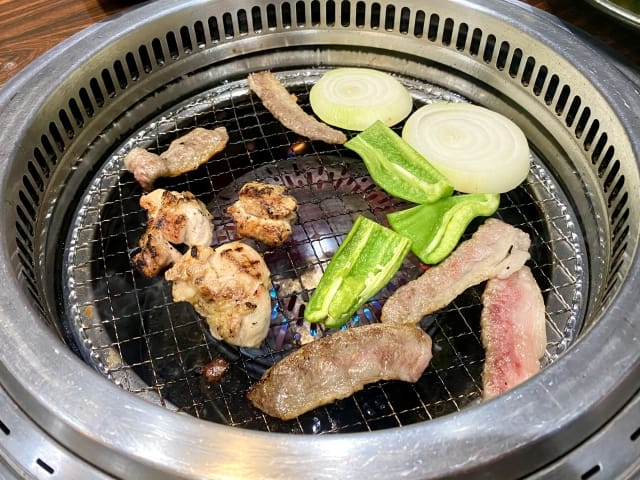
Well, you might wonder what to order once you enter a yakiniku restaurant. I'll share some points about ordering yakiniku.
Basically, I recommend ordering the cuts you like. Tell the staff your favorite cuts like karubi, rosu, or tan. If you're not sure, it's good to ask the staff. They should tell you their recommended cuts.
The key is to check the guideline for one serving when ordering the quantity. One serving is typically 100g, but it can vary depending on the restaurant.
It's also important to check the thickness and size of the meat. Whether it's thick-cut or thin-cut, large pieces or small pieces. Please check as you can choose according to your preference.
I recommend set menus for travelers. They often include small portions of various cuts, so you can enjoy many different tastes at once. It's nice that they're often reasonably priced, making them easy to order.
Karubi (Short Rib)
Source: Wikipedia
"Karubi," the short rib of beef, is a classic yakiniku menu item. Its charm is the juicy taste with plenty of marbled fat.
It's characterized by an appropriate amount of fat, which melts when grilled, releasing a sweet flavor. This fat enhances the umami of the meat.
Karubi is often cut thickly. Therefore, when grilling, it's necessary to be careful not to burn the surface. I recommend grilling it slowly over low heat.
Karubi goes exceptionally well with sweet and savory sauce. It's delicious to eat it thoroughly coated with sauce. Putting it on rice is also exceptional.
Karubi is the No.1 popular cut in yakiniku. It's an essential dish that I'd recommend even to those eating yakiniku for the first time.
Rosu (Chuck Roll, Rib Roast)
Source: Wikipedia
The next recommendation is rosu meat. There are varieties like chuck roll and rib roast. Rosu meat is characterized by its light taste with less fat. It's nice that it's healthier.
The soft meat quality is also attractive about rosu meat. It has no peculiar taste and is easy for anyone to eat. It's often cut thinly, so it's OK to grill it quickly. Be careful not to overcook it.
Rosu meat goes exceptionally well with salt-based sauce. You can fully enjoy the umami of the meat with simple seasoning.
Rosu meat is perfect for those who want to enjoy yakiniku healthily. It's a satisfying dish with a light taste.
Tan (Beef Tongue)
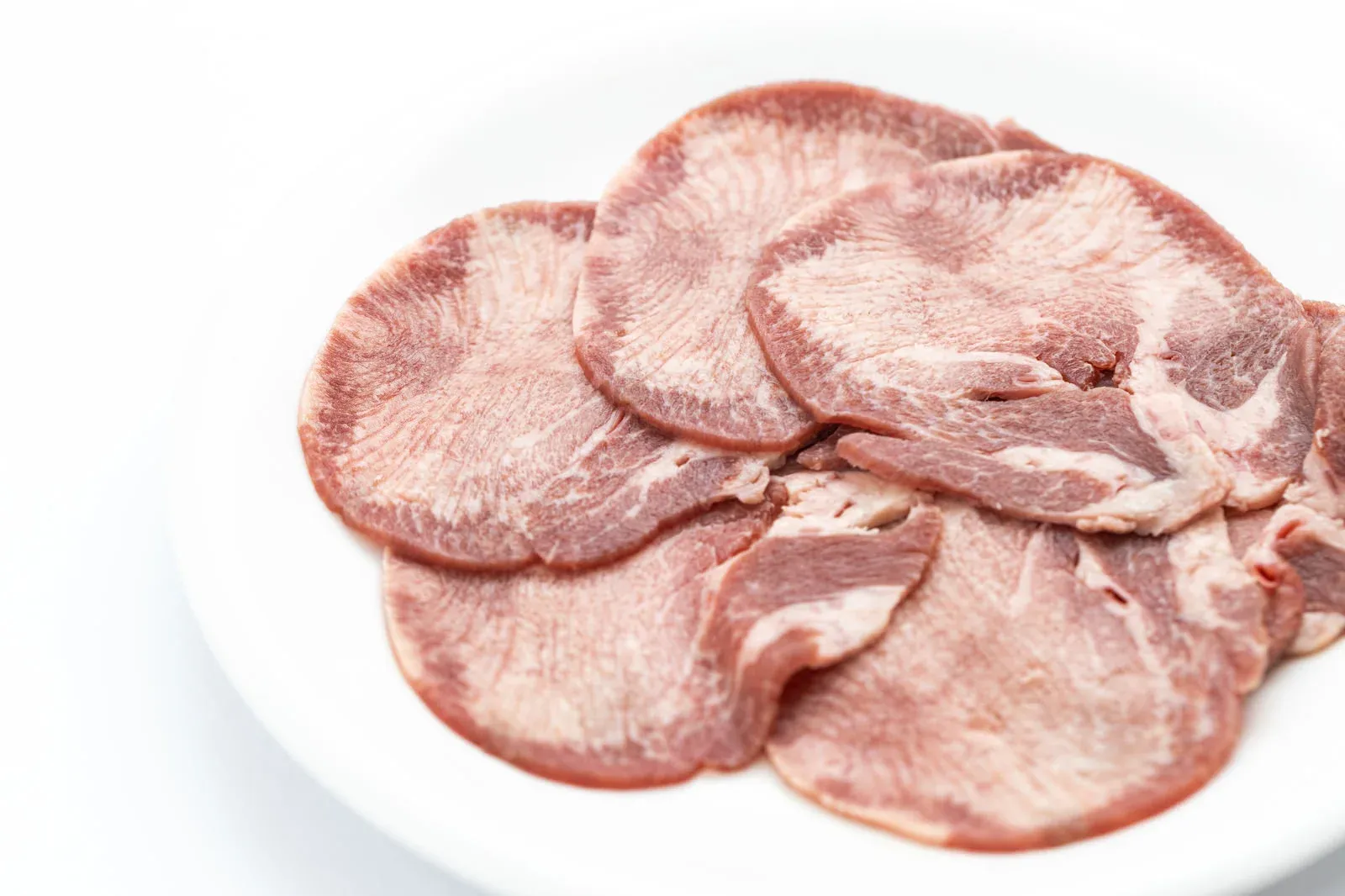
Beef tongue, or "tan," is attractive for its unique texture and flavor among yakiniku dishes. Tan refers to the tongue of the cow.
Beef tongue is characterized by its chewy texture. It has a firm chewiness, making it very satisfying to eat. Its unique flavor is also one of its charms. It has a distinctive taste, so people either love it or hate it, but I love it.
Beef tongue is generally thinly sliced, so I recommend grilling it quickly. If you overcook it, it becomes hard, so it's best when it's just slightly browned.
Lemon sauce goes best with beef tongue. It's a cut that's unique but delicious, so please give it a try.
Harami (Skirt Steak)
Source: Wikipedia
Harami is the diaphragm part of the cow. It's characterized by its rich taste and chewy texture.
Harami is characterized by its harder texture due to having more tendons. But because of this, it's packed with umami. Grilling it for a longer time brings out this umami.
Another characteristic of harami is that stronger seasoning is recommended. It's delicious to eat it coated with a strong-flavored sauce. It also goes great with beer or highballs.
This harami is recommended when you want to eat hearty meat. It's a very satisfying dish.
Horumon (Offal)
Source: Wikipedia
Horumon is a general term for internal organ parts like liver, heart, and tripe.
Horumon is especially loved by Japanese people for its good pairing with alcohol, but it's characterized by its strong taste. However, its unique flavor becomes addictive. Its rich umami and unique texture - many people get hooked once they eat it.
Horumon is OK to grill quickly. As it becomes hard if overcooked, it's recommended to grill it just until it's slightly cooked. It's common to eat it coated with sauce.
It might be challenging for foreigners, but if it's on the menu at a yakiniku restaurant, I encourage those who are interested to give it a try.
Pork Belly
Source: Wikipedia
It's not just beef, pork is also a popular cut in yakiniku. Especially recommended is pork belly.
Pork belly is characterized by its sweet and delicious marbled fat. When grilled, the fat melts, spreading a juicy taste throughout your mouth.
Pork belly is often cut thickly. Therefore, the key is to grill it well to let the fat drip off. The contrast between the crispy grilled surface and the melty fat is the best.
I recommend eating pork belly with sesame oil or salt. You can fully enjoy the sweetness of pork with simple seasoning. It's also delicious wrapped in ssam (lettuce).
Chicken (Thigh Meat)
Source: Wikipedia
Chicken is also popular at yakiniku restaurants. Among chicken cuts, I especially recommend thigh meat.
It's nice that chicken thigh is low-calorie and healthy. It's light and easy for anyone to eat.
Chicken thigh needs to be thoroughly cooked. There's a risk of food poisoning if it's undercooked, so be careful. However, it becomes dry if overcooked, so the cooking temperature is important. I recommend checking if it's cooked through by cutting it once when it's browned.
Chicken thigh is delicious with salt-based sauce, regular sauce, or pepper. The key is to enjoy the umami of chicken with simple seasoning.
Frequently Asked Questions About Japanese Yakiniku
Finally, I'll answer some points that you might be curious about regarding Japanese yakiniku.
What Drinks Go Well with Yakiniku?
Yakiniku goes well with any alcohol, but the standards are beer and shochu. They help wash down the fattiness of the meat.
Red wine also pairs well with yakiniku. It enhances the umami of the meat, allowing you to enjoy the meat's taste more deeply.
Also, I recommend sake or white wine. I think they pair especially well with lighter meats. They don't interfere with the delicate taste of the meat, so you can enjoy the original taste of the meat.
Actually, a wide range of drinks go well with yakiniku, including cocktails and plum wine. I think finding your favorite drink is one of the points of enjoying yakiniku.
Is Eating Too Much Yakiniku Bad for Your Health?
It's necessary to be careful about eating too much yakiniku. Eating too much meat tends to be high in calories. Especially cuts with a lot of fat can lead to stomach discomfort if overeaten.
It's also necessary to be careful about excessive salt intake. Sauces contain a lot of salt, so be careful not to use too much.
Personally, I recommend ordering vegetables and salads to avoid overeating meat.
What's the Author's Recommended Cut for Yakiniku?
I think everyone has their own recommended yakiniku cuts, but my recommendations are karubi and rosu.
The charm of karubi is its juicy fat. It goes exceptionally well with sweet and savory sauce and makes you want to eat more rice. It's a standard yakiniku cut, so it's a must-try.
Rosu is light and has no peculiar taste, so it's an easy-to-eat cut for anyone.
While I like horumon, many foreigners might not like it, so please try karubi or rosu first.
I've introduced Japanese yakiniku from various perspectives.
Japanese yakiniku is characterized by using thinly sliced meat and seasoning with various sauces.
To enjoy yakiniku, I recommend various types of restaurants such as yakiniku specialty shops, horumon specialty shops, and all-you-can-eat restaurants. The key is to understand the characteristics of each and choose a restaurant that suits you.
Please read this guide and actually taste delicious yakiniku in Japan!


